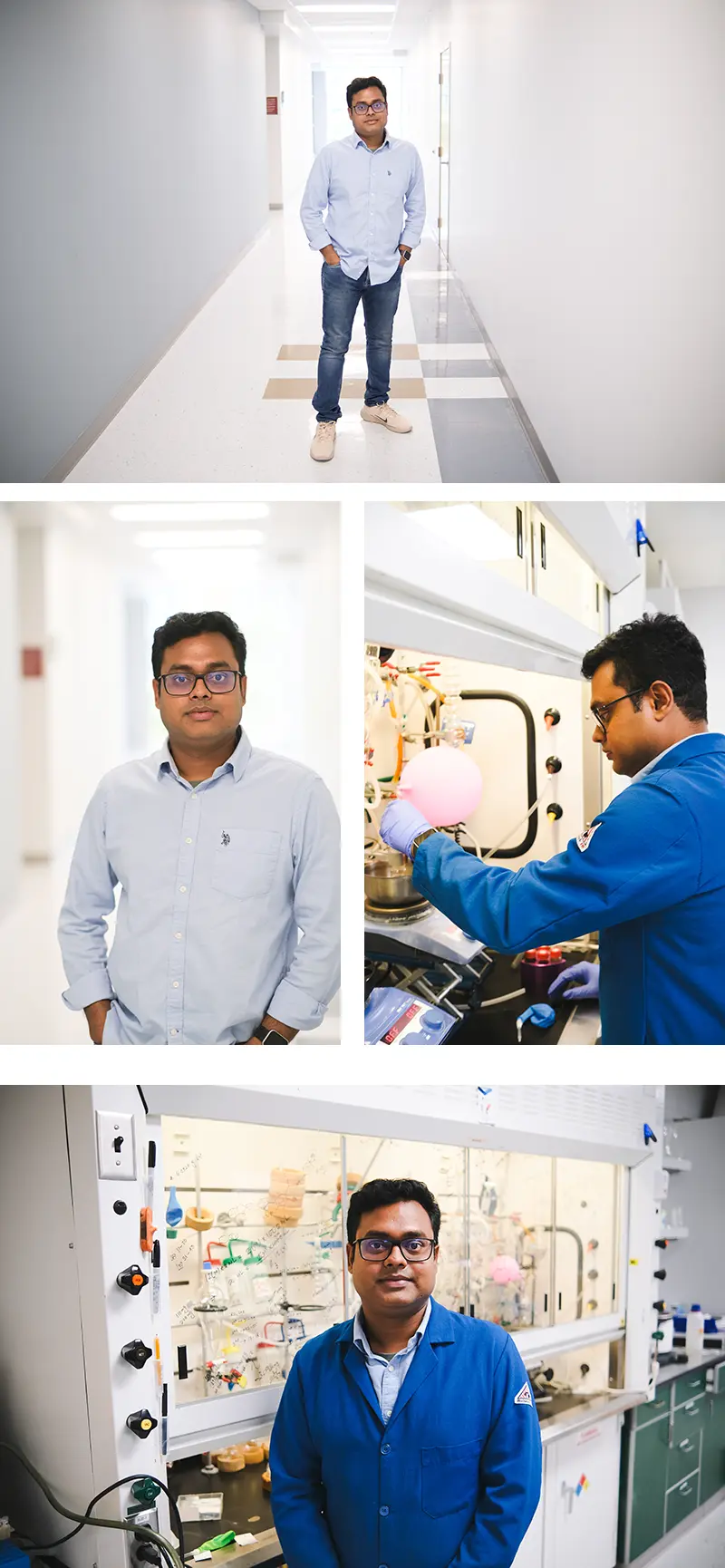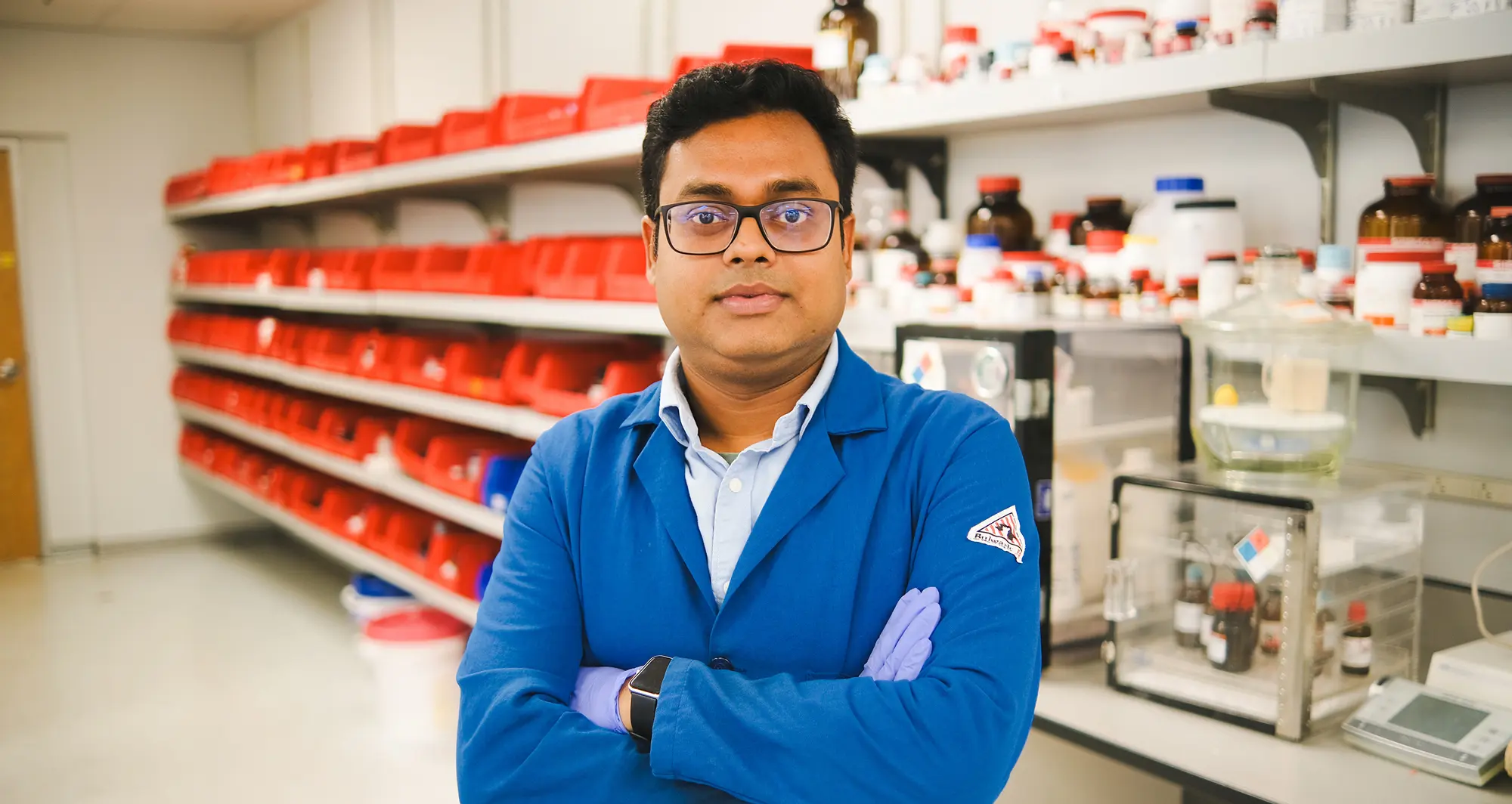Meet one of our early-career scientists at Sanford Burnham Prebys: Ranajit Das, PhD, a postdoctoral researcher in the lab of Nicholas Cosford, PhD. Das is a medicinal chemist focused on designing and synthesizing new potential therapies, with a focus on cancer treatment.
When and how did you become interested in science?
During my early childhood education, I developed a deep curiosity about the world around me. Over time, I became more interested in chemistry. I found it fascinating that two colorless things can mix and make something colorful, or that two liquids can merge and produce a solid.
Then, when I was introduced to organic chemistry in my undergraduate years, it was eye-opening. I realized that organic chemistry is connected to nearly everything we use or do in our everyday lives. Everything from the blue dye in denim jeans to fading vegetable colors, fragrances, and even the medicines we take, are made of organic molecules. That realization drew me even deeper into the subject.
As I continued studying organic chemistry, I got into synthetic organic chemistry and building molecules. If you have the right knowledge, you can use simple building blocks that are usually made of carbon, hydrogen, nitrogen, and oxygen, and assemble them into compounds that can be functional, beautiful and even lifesaving.
How has your scientific career evolved?
While earning my master’s degree, I was learning about drug discovery and how organic molecules can be useful for treating human diseases. Then, during my PhD, I trained in how to use those chemical components to build a probe to study a disease and ascertain how to potentially cure that disease.
Ever since, I have wanted to build something which will improve human health. That is the reason I decided to pursue a scientific career.
What brought you to the Cosford lab at Sanford Burnham Prebys?
I chose to pursue my postdoctoral training at Sanford Burnham Prebys because of its strong emphasis on drug discovery. The Cosford lab has been working for almost two decades on a wide range of disease models—including cancer, central nervous system and infectious diseases—which are key areas in today’s therapeutic landscape.
This provides an unusual opportunity to gain practical experience with diverse targets. Furthermore, several of the lab’s drug candidates are in preclinical or phase I/II clinical trials, reflecting its strength in translational research.
What are the key areas of research you focus on?
Apoptosis, or programmed cell death, is a natural process in our body. It allows us to remove unwanted cells as we grow and develop. Cancer, however, can disrupt the system of apoptosis.
One way this happens is through the action of inhibitor of apoptosis proteins, which block caspases and help regulate cell survival and cell death during cancer. The second mitochondrial activator of caspases, or SMAC, can bind to and neutralize these inhibitor of apoptosis proteins, thereby promoting apoptosis.
We’re trying to make molecules that can mimic SMAC in order to treat cancer.

What motivates you about your research?
It’s the creativity and complexity around creating 3D chemical architecture to have potential medicinal properties. As we test and refine the compounds, I enjoy using my knowledge of how they react with protein molecules and how that affects the activity of those proteins, which can be useful for targeting diseases.
It is essential to nurture a feedback loop of biological activity and synthesis that keeps the drug discovery process dynamic and purposeful. For me, it is motivating to see that we are designing something and synthesizing something that is having the biological activity necessary for any potential candidate therapy. From there, we can work on finetuning in terms of potency, selectivity, pharmacodynamic stability and other characteristics of successful treatments.
What do you like about working here?
I like the collaborative and supportive research environment here at the institute. We have scientists and students from many different backgrounds and areas of expertise all focused on the same goal, the advancement of biomedical research.
The core research facilities and interdisciplinary expertise make this place ideal for pursuing very complicated targets for translational research. The Institute also has an emphasis on mentorship and career development, which is very important. I feel I’m growing as a scientist in a community which values curiosity, integrity and teamwork.
How would you describe the culture here?
There is a culture of open communication. Sharing ideas, discussing challenges and seeking feedback are encouraged. I’ve found this helps foster personal and professional growth, as well as scientific innovation.
What do you enjoy doing when you’re not in the lab?
I have a deep appreciation for world cinema, particularly Hollywood classics from the 80s and 90s. Bengali literature holds a special place in my heart, as does Indian classical music—especially the rich, melodic tones of the sitar and sarod.
Postdocs at Sanford Burnham Prebys are pushing the boundaries of science every day through curiosity, collaboration, and innovation. This series highlights their unique journeys, what inspires their work, and the impact they’re making across our labs.
